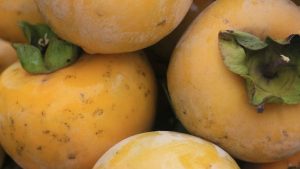
10 Tips for Growing Red Currant at Home
Red currants are a delicious and nutritious berry that can be grown at home with a little know-how and care. Whether you’re a seasoned gardener or a novice, these tips will help you successfully grow and harvest your own red currants.

Tip #1: Choose the right location
When choosing a location to grow your red currants, look for a spot that gets full sun to partial shade. Red currants need at least six hours of sunlight a day to thrive. They also prefer well-drained soil that is slightly acidic, with a pH between 6.0 and 6.5. Avoid low-lying areas where frost may linger in the spring. It is also important to keep in mind that red currants are hardy plants that can tolerate a range of soil types, but will not thrive in poorly-drained soils.
Another thing to consider when choosing a location for your red currants is the availability of irrigation. These plants require consistent moisture, especially during the fruit-forming period, so if you live in an area where water is scarce, you might want to consider installing an irrigation system or choosing a different location.
Tip #2: Plant at the right time
The best time to plant red currants is in the fall or early spring. This will give the plants time to establish their root systems before the hot summer months. Planting red currants in the summer can stress the plants and reduce their fruit production. It’s also important to note that when planting in the fall, it’s best to do it a few weeks before the first frost, so that the roots have enough time to get established before the soil freezes.
Another thing to consider when planting your red currants is the size of the plant. If you’re buying a bare-root plant, it’s best to plant it as soon as possible after purchase, but if you’re buying a container-grown plant, you can plant it at any time during the growing season. However, it’s still best to avoid planting during the heat of the summer, as the plant may struggle to establish itself.
Tip #3: Space plants correctly
When planting red currants, space them about 3 to 4 feet apart. This will give them enough room to grow and spread out, while also allowing for proper air circulation. Crowded plants are more susceptible to disease and pests. It’s also important to keep in mind that red currants are self-fertile, meaning that they don’t need another plant to cross-pollinate with in order to produce fruit. So, you don’t have to worry about planting multiple plants to ensure good fruit production.
Another thing to consider when spacing your red currant plants is the size of the variety you’re growing. Some varieties can grow quite large, so make sure to give them enough room to spread out. If you’re growing a compact variety, you can plant them a little closer together.
Tip #4: Provide proper support
Red currants have a tendency to sprawl, so it’s important to provide them with proper support. This can be done by installing a trellis or staking the plants. This will also make it easier to harvest the fruit. It’s also important to note that red currants are relatively short-lived plants, so it’s a good idea to replace them every 5-7 years.
Another thing to consider when providing support for your red currant plants is the size of the variety you’re growing. Some varieties can grow quite large, so make sure to provide them with enough support to keep them upright. If you’re growing a compact variety, you may not need as much support.
In addition to providing support for the plants, it’s also important to train the branches to grow in the direction you want. This can be done by tying them to the trellis or staking as they grow. This will not only keep the plant upright, but also make it easier to prune and harvest the fruit.
Tip #5: Prune regularly
Regular pruning is an important part of growing red currants. Prune in late winter or early spring to remove any dead or diseased wood. This will also encourage new growth and fruit production. When pruning, it’s important to remove any old or weak canes that are no longer producing fruit. This will also help to keep the plant from becoming overcrowded.
Another thing to consider when pruning your red currant plants is the size of the variety you’re growing. Some varieties are more vigorous growers than others, so make sure to prune accordingly. For example, if you’re growing a compact variety, you may not need to prune as frequently or as heavily as you would with a more vigorous variety.
Tip #6: Water regularly
Red currants need consistent moisture to thrive, especially during the fruit-forming period. Water your plants deeply and regularly, making sure to keep the soil consistently moist but not waterlogged. It’s also important to note that red currants are relatively drought-tolerant, so you don’t have to worry too much about over-watering.
Another thing to consider when watering your red currant plants is the weather. If you live in an area that receives a lot of rainfall, you may not need to water as frequently. On the other hand, if you live in a dry area, you may need to water more often. It’s also important to note that red currants are relatively drought-tolerant, so you don’t have to worry too much about over-watering.
Tip #7: Fertilize regularly
Regular fertilization is important for red currants to produce healthy fruit. Use a balanced fertilizer in early spring and again after the fruit has been harvested. Organic options like compost or bone meal are also great options. It’s important to avoid over-fertilizing, as this can lead to excessive leaf growth at the expense of fruit production.
Another thing to consider when fertilizing your red currant plants is the soil type. If you’re growing your plants in well-fertile soil, you may not need to fertilize as often. On the other hand, if you’re growing your plants in poor soil, you may need to fertilize more frequently.
Tip #8: Monitor for pests and diseases
Red currants are susceptible to a variety of pests and diseases, such as aphids, spider mites, and powdery mildew. Regularly check your plants for signs of infestation and take action as needed. Organic methods, such as neem oil, can be effective in controlling pests and diseases. It’s also important to keep an eye out for common red currant diseases, such as leaf spot, which can be controlled with the use of fungicides.
Another thing to consider when monitoring your red currant plants for pests and diseases is the use of companion plants. Some plants, such as marigolds, can help to repel pests and improve the overall health of your red currant plants.
Tip #9: Harvest at the right time
Red currants are ready to be harvested when they are fully ripe and have a deep red color. This typically happens in late June or early July. Use scissors to snip the fruit off the stem, leaving a small stem attached to the fruit. Be sure to harvest all the fruit at once, as leaving any on the bush will attract pests and disease.
Another thing to consider when harvesting your red currants is the size of the variety you’re growing. Some varieties ripen earlier or later than others, so be sure to check for ripeness before harvesting. You can also taste a berry to check the level of sweetness or tartness.
Tip #10: Enjoy the fruits of your labor
Once your red currants are harvested, enjoy them fresh, frozen or in jams, jellies, syrups and pies. They are also a great addition to salads, sauces, and even cocktails. With proper care and attention, you can enjoy the delicious and nutritious fruits of your own red currant bushes for years to come. Additionally, red currants are a rich source of vitamin C, antioxidants and minerals, so you can enjoy them knowing that you’re also eating something that is good for your health.
Another thing to consider when enjoying your red currants is preserving them for later use. They can be frozen, canned or made into jams, jellies or syrups to enjoy throughout the year.
Growing your own red currants at home can be a rewarding experience. With the right location, timing, care, and attention, you can enjoy the delicious and nutritious fruits of your labor for years to come.
If you are interested in growing other fruits, check out these other articles: How to grow raspberries, How to grow dates, How to grow mango, How to grow pomegranate, How to grow pomelo, How to grow kiwi, How to grow strawberry, How to grow currants, How to grow khaki, How to grow cranberries, How to grow bananas, How to grow citrus, How to grow blueberries, How to grow blackberries, How to grow pineapples, How to grow lemons.












